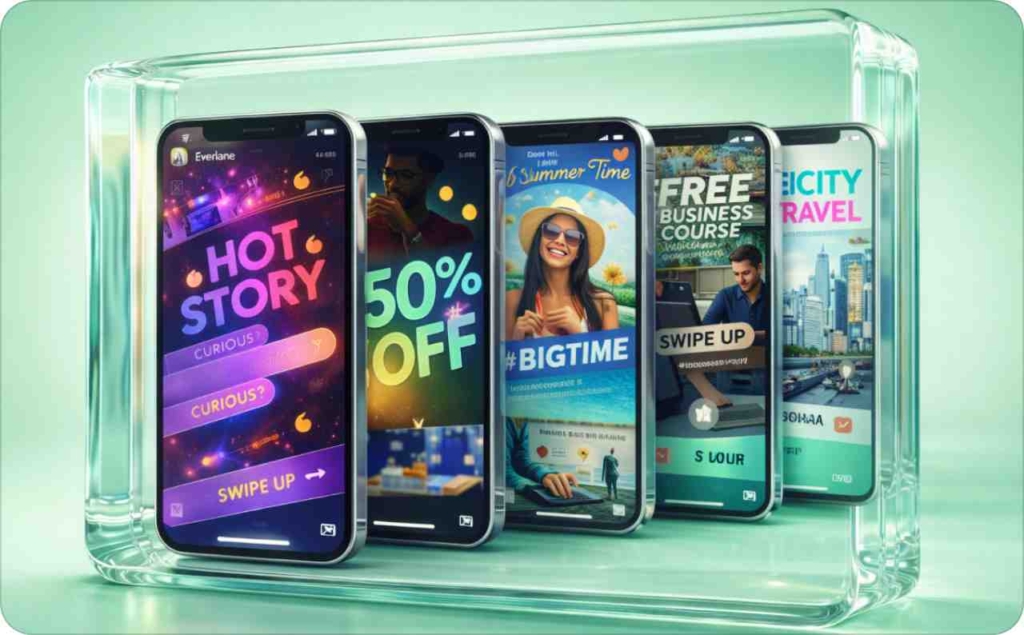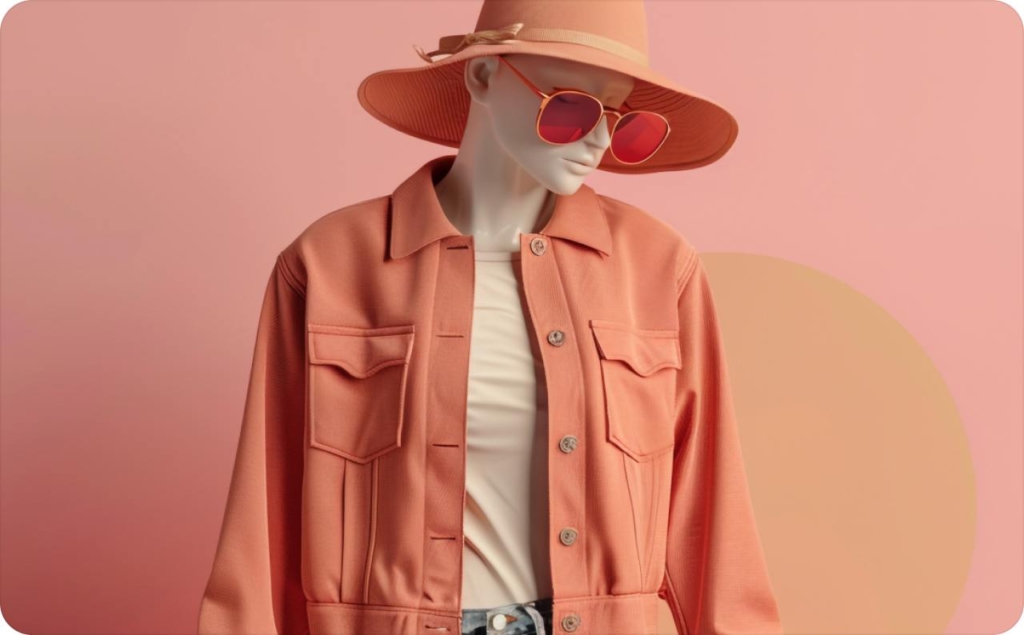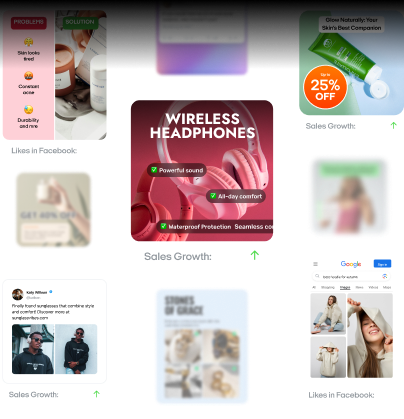Effective ads for products: Boost purchase intent 20%+ in under 30 seconds
Can short ads really drive more sales? Zeely AI shows how to craft effective product ads that grab attention fast and boost purchase intent by over 20% in half a minute.
Ever notice how some products practically sell themselves the moment they appear in a feed, while others vanish in a scroll? That split‑second magic isn’t luck; it’s the science of product ads done right. By fusing real‑time catalog data with laser‑focused targeting, modern product ads turn every impression into a shoppable micro‑moment, capturing high‑intent clicks, resurrecting abandoned carts, and even sparking viral brand love.
In the next few minutes you’ll see how search, display, and video formats each pull a different revenue lever, why feed hygiene beats fancy creative, and how brands from Nike to Dollar Shave Club engineered ads that became culture. Ready to transform thumbnails into profit engines? Let’s dive in.
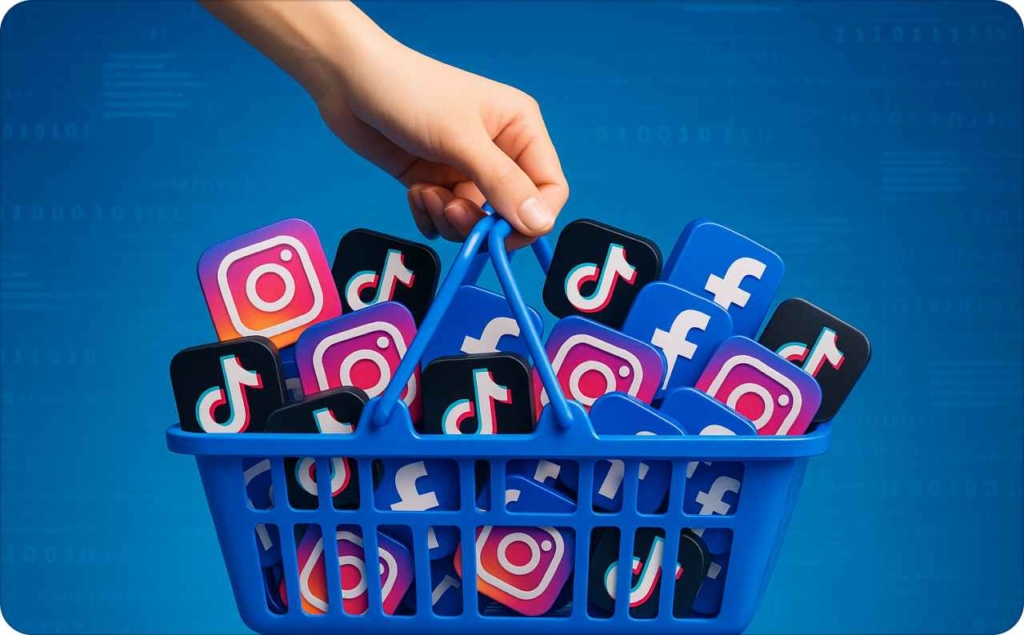
What are ads for products?
Product ads are live, feed‑powered creatives engineered for instant commerce, not brand awareness. Every impression contains a title, high‑res image, real‑time price and stock level, and a SKU‑level call‑to‑action pulled straight from your Google Merchant Center, Meta Catalog, or Content API. Because each click is tied to a unique product ID, you can calculate true incremental ROAS at the variant level instead of settling for blended averages.
Brand vs. product campaigns. Brand advertising optimises for reach, awareness, and sentiment; product ads exist to harvest demand now. Success is measured in CPA, revenue‑per‑impression, and marginal profit—not “ad recall” or share‑of‑voice.
The engine under the hood
- Live commerce feed. Updates every 15 min with price, availability, and creative assets
- Signal fusion & auction. Bidding algorithms overlay feed data with intent signals to score every impression
- Dynamic creative assembly. Winning units are rendered on the fly, swapping images, promos, and price badges while respecting margin guardrails you set via custom labels
- Closed‑loop attribution. Pixel or server‑side events stitch conversions back to SKU and campaign ID, enabling algorithmic bid shifts within minutes
Format breakdown, expert levers & real‑world examples
| Format | Zero‑moment role | Expert lever | KPI benchmark | Illustrative example |
| Search / shopping | Capture query‑level intent | Segment feed with custom labels for tiered Target ROAS bidding | CTR 1.5‑2%; conversion rate 2‑3× text ads | Nike Pegasus 41 launch: Size‑specific shopping tiles with price‑match badge lifted mobile revenue +28% in week 1 |
| Dynamic display | Precision retargeting & look‑alike prospecting | Exclude 7‑day purchasers and cap at 3 impressions/24 h to protect UX and margin | ROAS lift 30‑45% vs. static banners | Wayfair HTML5 carousel resurfaces the exact sofa a visitor viewed, then auto‑swaps to colour‑matched décor; adds +19 % incremental sales per returning shopper |
| Shoppable video | Demonstrate & inspire in < 30 s | Show brand cue < 1 s, core benefit < 3 s; attach Merchant‑sync cards for tap‑to‑buy | Purchase‑intent lift 18‑25% | Gymshark on TikTok: 15‑s UGC “fit‑check” with swipe‑up product card hit 1.4 % CTR and cut CPA ‑22% versus static collection ads |
When to use which:
- Search wins the bottom funnel at the moment of purchase intent
- Display recovers carts and scales discovery via dynamic prospecting
- Video compresses education and emotion into seconds — perfect for products that need to be experienced
Why product ads drive immediate sales
- Hyper‑relevance at millisecond speed. Feed + intent signals = an ad that feels tailor‑made for the user’s need
- Algorithmic margin control. Smart Bidding and Advantage+ learn price elasticity at the SKU level, allocating spend where profit per impression peaks
- Granular diagnostics. Variant‑level data spotlights winners and under‑performers fast, letting you boost stock, refine images, or pause waste within days
By uniting surgical targeting, automated optimisation, and airtight attribution, product ads convert ordinary thumbnails into profit engines, turning every impression into a measurable step toward revenue growth.
Case study insights from top brands
Ever wonder why certain ads linger in your memory or spark massive engagement, while others disappear without a trace? The answer lies in how top brands combine storytelling, strategy, and precision targeting to maximize ROI. Let’s break down how Coca-Cola, Old Spice, and Nike turned product ads into cultural moments and what you can learn from their success.
Coca‑Cola: Mass‑personalisation that turned bottles into media
The campaign: “Share a Coke”
What happened: Coke swapped its logo for 150 popular first names, then thousands more, inviting people to hunt, gift and post their personalised bottles. The social scavenger hunt reversed a decade‑long sales slide.
Tactical breakdown:
- Ad format: Integrated rollout — retail displays, TV, web video, social #ShareACoke UGC
- Targeting move: Name‑level personalisation created millions of micro‑segments without extra media cost
- Performance metrics: 500 k+ Instagram photo shares; 998 m Twitter impressions; +2% U.S. sales in launch year
Why it worked: The pack itself became the ad, merging physical product, social proof, and earned reach.
Nike: Values‑driven storytelling that sold shoes
The campaign: “Dream Crazy”
What happened: Featuring Colin Kaepernick, Nike embraced social controversy to align with younger, purpose‑led consumers.
Tactical breakdown:
- Ad format: 90‑second hero film plus athlete‑led Instagram cuts
- Targeting move: Heavy paid push to Gen‑Z/millennial affinity audiences; retargeted viewers with product drops
- Performance metrics: Online sales spiked 31% over Labor Day weekend; social mentions +1 678%
Why it worked: Bold values + star creators turned a TV spot into a cultural moment, amplifying both brand equity and direct sales.
Apple: Proof‑of‑product through ugc at global scale
The campaign: “Shot on iPhone”
What happened: Apple crowdsourced real users’ photos/videos and plastered them on billboards, social feeds and gallery takeovers, showcasing camera quality better than any spec sheet.
Tactical breakdown:
- Ad format: OOH megaposters, Instagram carousel takeovers, YouTube shorts
- Targeting move: Always‑on hashtag #ShotoniPhone funneled the best content into seasonal pushes
- Performance metrics: 70 m+ Instagram interactions; 24% lift in iPhone sales during early waves; Cannes Lions 2025 Creative‑Effectiveness Grand Prix
Why it worked: User proof beat brand claims, sustaining a decade‑long story that still converts upgraders.
Dollar shave club: Startup disruption with a $4.5K viral video
The campaign: “Our Blades Are F***ing Great”
What happened: Founder Michael Dubin’s deadpan warehouse walk‑through mocked razor giants and crashed the site.
Tactical breakdown:
- Ad format: 1 min YouTube spot, amplified by PR and retargeting
- Targeting move: Look‑alike audiences built from early subscribers; heavy remarketing to abandoned carts
- Performance metrics: 12 000 new subscribers in 48 hours; 5 m+ initial views; eventual $1 bn Unilever exit
Why it worked: Humor + founder authenticity delivered memorability on a shoestring, proving storytelling can out‑punch spend.
Glossier: Community‑fuelled commerce
The campaign: Always‑On UGC Feed
What happened: Born from beauty blog Into The Gloss, Glossier reposted customer selfies and reviews as both organic and paid ads, making the feed feel like a friend group chat.
Tactical breakdown:
- Ad format: Instagram Reels, Stories polls, TikTok GRWM clips
- Targeting move: Micro‑influencer seeding; sequential retargeting from blog readers to product ads
- Performance metrics: 600% YoY sales growth; customer base tripled
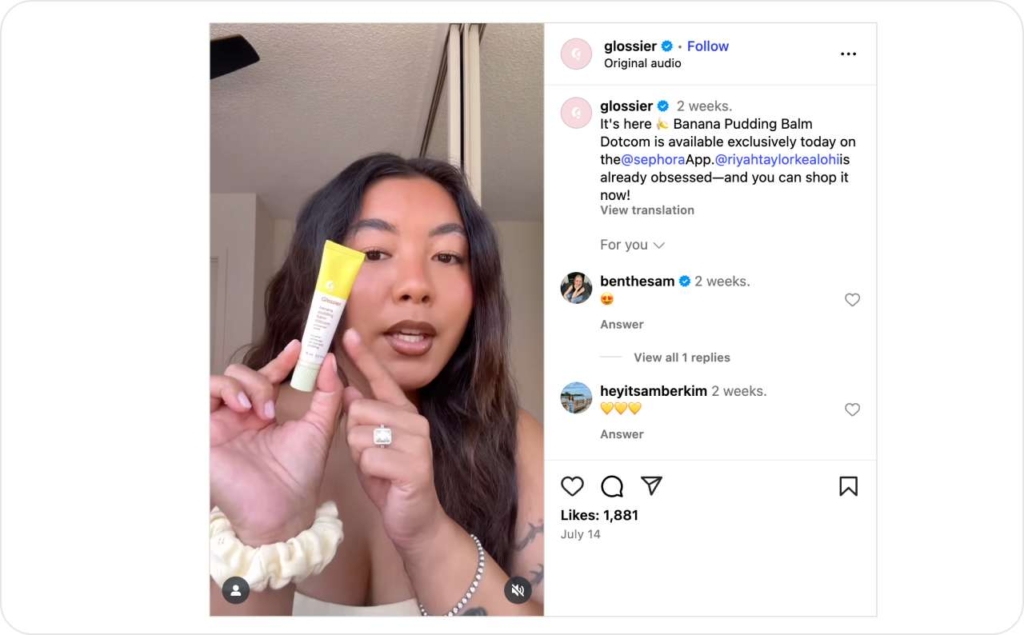
Photo source: @glossier
Why it worked: Participatory creation replaced polished hero shots, turning customers into the creative department.
Dove: Emotion‑led advocacy that went mega‑viral
The campaign: “Real Beauty Sketches”
What happened: A forensic artist drew women twice — once from self‑description, once from a stranger’s. The stark reveal generated worldwide debate on self‑esteem.
Tactical breakdown:
- Ad format: 3‑min YouTube film, short cut‑downs, PR amplification
- Targeting move: Seeded with influencers plus paid YouTube TrueView to beauty/lifestyle segments
- Performance metrics: 114 m views in first month — the most‑watched ad of 2013; ranked #1 on Viral Video Chart

Photo source: Dove
Why it worked: Deep emotional insight paired with share‑worthy storytelling lifted brand love beyond product benefits.
Top advertising platforms for your product ads
There are different types of digital advertising. With digital ad spend soaring past $600 billion globally, marketers face an overwhelming number of paid advertising channels — each claiming to be the most effective. But which platforms actually deliver ROI for product ads? And how do you align audience targeting, creative execution, and budget strategy to make the most of each?
In this section, you’ll find a clear, data-backed comparison of the top advertising platforms for products — Google Ads, Meta Ads, TikTok, and YouTube. You’ll walk away with practical insights on ad formats, cost efficiency, and creative approaches that convert, backed by real-world metrics.
Google Ads
If you’re targeting buyers with clear search intent, Google Ads offers unmatched precision, especially through Shopping Ads and Dynamic Search Campaigns. Google’s massive reach makes it a cornerstone for product visibility.
Google Shopping Ads are ideal for eCommerce brands showcasing physical items directly within search results. These visually rich placements pull product titles, prices, and images straight from your product feed, reducing friction in the buyer’s journey. Meanwhile, Dynamic Search Ads automate targeting by scanning your site content to match high-intent queries you might miss manually.
According to WordStream, the average CPC for Google Shopping Ads is around $0.66, and the average conversion rate hovers near 2.7%. That makes it one of the most cost-effective product ad platforms for performance marketers focused on ROAS.
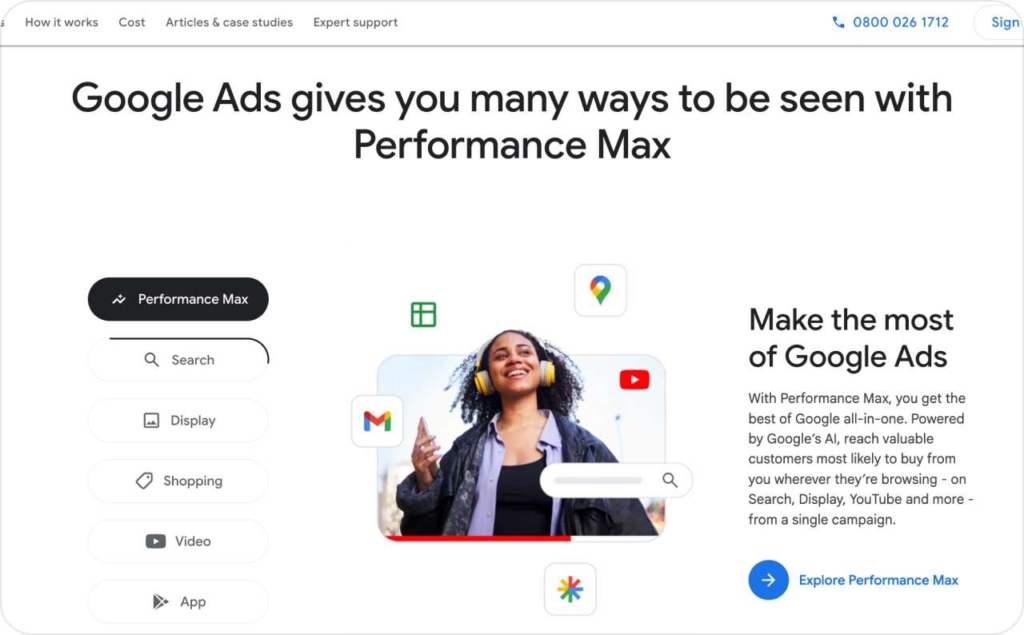
Photo source: Google Ads
To maximize performance:
- Use segmented product groups and custom labels to organize campaigns
- Test bidding strategies like Target ROAS or Maximize Conversion Value
- Layer in negative keywords to avoid irrelevant traffic
Together, these tools create a scalable, data-driven ecosystem for promoting broad or deep product catalogs.
Meta Ads
Struggling to tell your brand story visually while still driving conversions? Meta’s ecosystem — Facebook and Instagram, is designed for exactly that. With advanced audience targeting tools and visually dynamic ad formats, Meta Ads give you the power to craft scroll-stopping product promotions.
Catalog Ads on Meta platforms connect directly to your eCommerce product feed and allow you to dynamically showcase items in carousels, collections, or video formats. What sets Meta apart is its rich behavioral and interest-based targeting. Whether you’re retargeting past visitors or attracting new audiences based on purchase behavior, Meta helps you refine who sees your product and when.
Data from Meta shows carousel ads can boost engagement rates by 72% over static ads. Combined with Meta’s automated placements and performance optimization tools, brands often see a lower cost-per-action and better reach efficiency compared to more rigid search networks.
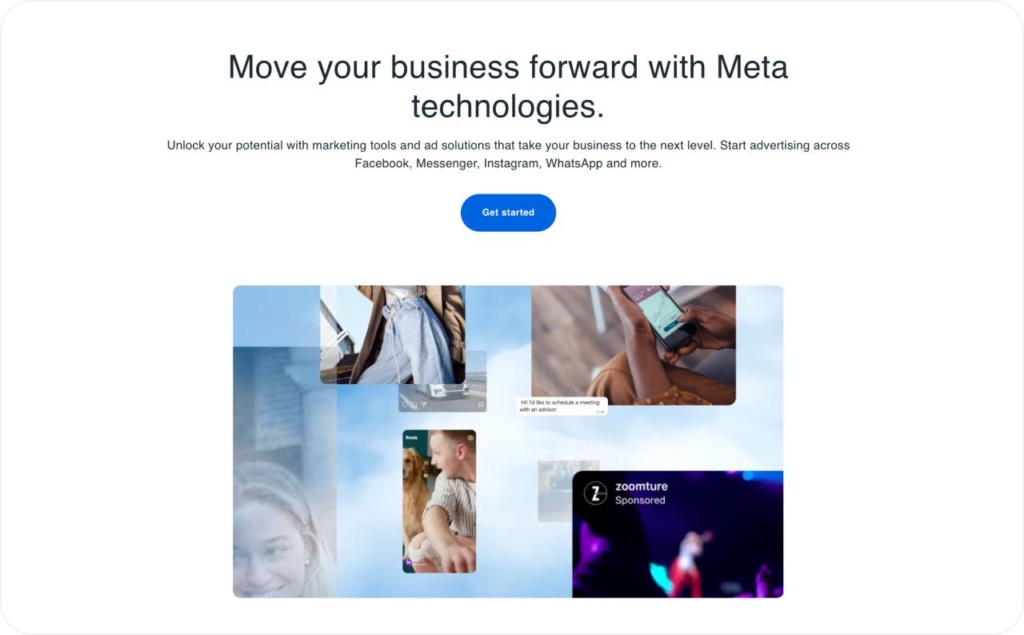
Photo source: Meta Ads
To make the most of Meta Ads:
- Run A/B tests on headlines, formats, and creative angles
- Use Advantage+ Shopping Campaigns to automate high-performing placements
- Integrate UGC and lifestyle visuals to boost click-through and save rates
The synergy between Facebook and Instagram’s ad infrastructure makes Meta a leading choice for visual storytelling and impulse-driven product discovery.
Emerging platforms: TikTok & YouTube
Want to break out of traditional ad fatigue and tap into younger, highly engaged audiences? Then it’s time to explore TikTok and YouTube. Both platforms combine creative storytelling with powerful targeting, unlocking new ways to market your products through video-first content.
TikTok Ads are built around authenticity and trend participation. With in-feed video ads, branded effects, and Spark Ads, your product promotion becomes part of the user experience, not an interruption. Brands using TikTok’s shoppable video formats have seen CTR as high as 1.5% and a 20%+ boost in purchase intent when paired with creator content.
YouTube Ads, powered by Google’s audience targeting, allow deep refinement. From TrueView in-stream ads to shoppable overlays, YouTube is ideal for product launches and education-driven funnels. It also ranks high for view-through conversions, especially when running skippable ad formats that don’t disrupt the user journey.
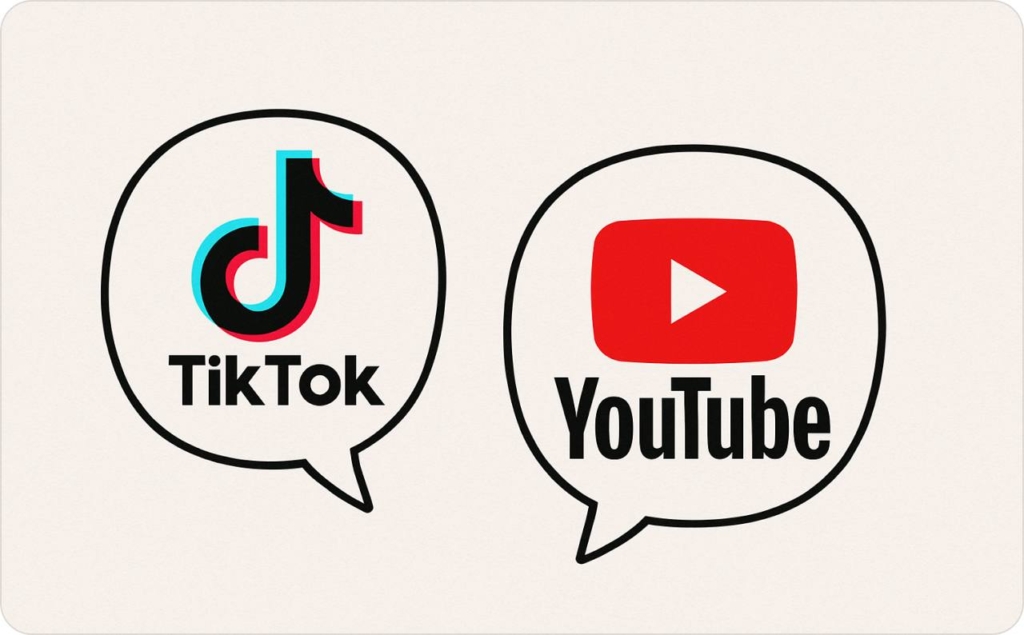
For success on emerging platforms:
- Keep videos short: 6–15 seconds on TikTok, 15–30 seconds on YouTube
- Match your message to the platform tone, polished storytelling for YouTube, raw engagement for TikTok
- Partner with micro-influencers to boost authenticity and reach
While CPMs may be slightly higher on these channels, the increased engagement and brand recall often justify the investment, especially for DTC brands looking to drive awareness at scale.
Final Thoughts: Choosing the right platform for your product ads
| Platform | Use when your objective is … | Primary strengths | Metric to watch |
| Google Ads | Capture high‑intent buyers actively searching for a solution | Query‑level precision, product‑feed‑powered visuals, wide reach | Cost‑per‑acquisition or target ROAS |
| Meta Ads | Inspire impulse purchases and tell a visual brand story | Rich behavioural targeting, dynamic catalog formats (carousels/collections), Advantage+ automation | CTR and CPA |
| TikTok Ads | Engage Gen Z/young millennials through authentic, trend‑driven video | Native creator integrations, shoppable in‑feed units, high engagement | Purchase‑intent lift and video view‑through rate |
| YouTube Ads | Educate or launch with longer‑form storytelling | Google audience data, skippable TrueView plus shoppable overlays, strong view‑through conversions | View‑through revenue and watch‑time completion |
Quick rule of thumb:
Start with Google to harvest intent, use Meta to amplify visuals and retarget, and layer TikTok or YouTube when you need video storytelling and brand affinity at scale.
How to create and optimize compelling ads for your product
Most brands don’t lose money on ads because of bad products — they lose because their campaigns lack structure. If you’re not seeing the results you want, it’s not always about spending more. It’s about building smarter ads from the ground up and optimizing every step with data.
Start with a clear campaign setup
You can’t launch a strong campaign without knowing who it’s for. Start by identifying your ideal buyer using tools like Google Trends, Meta Audience Insights, or even your CRM. What are their pain points? What language do they respond to? Where do they spend time online?
Once your audience is locked in, move to your ad creative. Short-form videos work well on TikTok and Instagram, especially if you can hook attention in the first 3 seconds. For Google Ads, match your headline directly to search intent. A format like “Save 25% on Product – Shop now” performs well when buyers are ready to convert. Always include a clear, direct CTA, like “Shop now,” “Try for free,” or “Book today.”
Now it’s time to set up your campaign technically. In Google Ads Editor, select your objective, and integrate conversion tracking using GA4 or Meta Pixel. Want to retarget visitors who didn’t buy? Use Dynamic Ads on Meta to automatically show them products they browsed earlier. These ads often drive the highest ROAS when paired with urgency-based messaging.
Before launch, make sure your UTM parameters are tracking correctly across every link. That way, you’ll be able to trace results clearly in your analytics dashboard. During the learning phase, check performance daily to identify quick wins or issues.
Test and optimize your product ads
Strong campaigns aren’t set-and-forget — they’re living systems that evolve with data. Once your ad is live, run structured A/B tests. Try tools like Meta’s A/B Test Center or Google Ads Experiments to compare two versions of your creative. Start simple: test one variable at a time, such as the headline, CTA, or image.
Track key metrics like click-through rate, cost per acquisition and return on ad spend. If CTR is low, your hook might be weak. If ROAS is under target, your offer may not resonate or your targeting needs refinement.
Use platforms like AdEspresso or Optimizely to manage ongoing experiments. Want to see how users behave after the click? Tools like Hotjar and Microsoft Clarity let you visualize scroll depth, rage clicks, and where people drop off, helping you optimize both ad and landing page.
For context, brands that run structured A/B tests consistently see up to 32% lower CPA over time. It’s not about testing everything, it’s about improving one thing at a time.
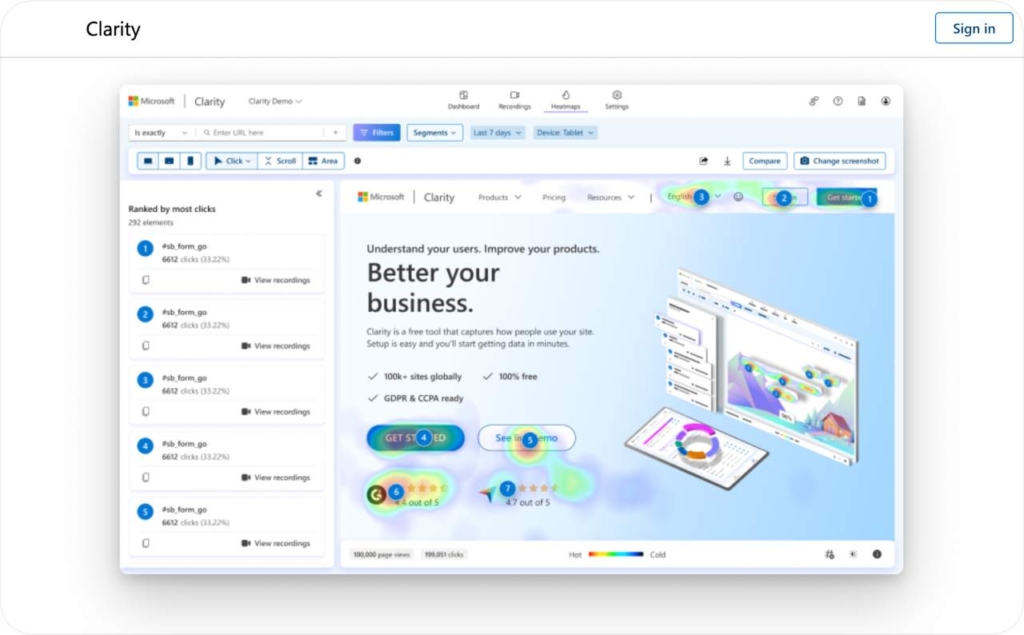
Photo source: Microsoft Clarity
Manage your budget and use smart bidding
Whether your budget is $500 or $50,000, what matters most is how efficiently you allocate it. Set clear performance targets. For example, if your CPA goal is $20 and you want 50 sales, you’ll need to invest at least $1,000 upfront, just to test and learn.
Use smart bidding strategies to automate optimization. On Google, start with maximize conversions or target ROAS. Meta offers Advantage+ Shopping Campaigns, which automatically adjust bids and placements based on likelihood to convert.
Don’t spread your budget too thin. Focus on top-performing audiences and creatives. Monitor performance by segment and shift dollars toward what’s working. Pause underperforming ads quickly, don’t wait weeks to make changes.
A useful benchmark: brands optimizing daily and adjusting bids weekly tend to lower cost-per-click by 20–30% compared to static setups.
Your budget isn’t just a limit — it’s a lever. Use it to scale what works, trim what doesn’t, and drive better outcomes without overspending.
Step-by-step guide to campaign setup
Start with research. Use tools like Meta Audience Insights, Google Trends, or first-party CRM data to define your ideal buyer. What’s their age range? What problems do they face? Which platforms do they scroll every day?
From there, write a simple persona. For example: “Emma is a 28-year-old who shops on Instagram and cares about clean beauty. She wants quick, honest content, not ads that feel fake.”
That’s the person your ad needs to speak to.
Design creatives that speak their language
Now build your visuals and copy based on that persona. With Zeely AI advertisement generator, you can effortlessly use static ads creator and auto-generated videos tailored to each platform. With TikTok ads creator you can make raw, relatable short-form videos that win attention. On Instagram, clean visuals with emotional triggers perform best. And on Google, it’s all about headlines and descriptions that solve a problem or offer clear value.
Zeely AI helps you lead with benefits, not features. AI advertisements are creative in their visual and textual elements, as well as CTAs that drive action — such as “Shop now,” “See how it works,” or “Get 20% off today.” With Zeely, producing effective, platform-specific creatives is no longer a guess — it’s automatic.
Configure the platform settings properly
Next comes the technical part, but it doesn’t have to be overwhelming.
Inside Google Ads Editor, choose the right campaign objective: “Sales” for eCommerce, “Leads” for services. Install GA4 or connect your CRM to track conversions. On Meta, make sure your Meta Pixel is active on the product pages you care about.
Setting up Dynamic Ads? Feed your product catalog into Meta Business Manager or Google Merchant Center. These ads automatically show users the products they browsed, so it feels personal and timely.
Implement tracking for performance analysis
Before you hit publish, make sure your analytics are connected. Add UTM parameters to every ad URL so you can track campaign performance in Google Analytics, HubSpot, or whichever dashboard you use.
Also set up custom events, like “Add to cart” or “Checkout initiated”, so you can pinpoint where people drop off in your funnel.
Launch and monitor in learning phase
Once your campaign is live, don’t walk away. The first 3–5 days are critical. Monitor impressions, CTR, CPC, and ROAS daily.
Is one creative getting 2x the clicks? Boost it. Is one audience barely converting? Cut it.
Campaigns that are monitored closely from day one tend to stabilize faster and waste far less budget.
Conclusion: Turn every impression into measurable growth
Product ads are no longer “set‑it‑and‑forget‑it” tiles, they’re living profit engines. When you ground each SKU in real‑time feed data, match formats to funnel stages, and fuel creative with proven storytelling triggers, every impression becomes an opportunity to earn revenue and brand equity.
Five habits to embed starting today:
- Start with perfect data hygiene. A clean up‑to‑date feed is the single biggest predictor of ROAS. Audit titles, images, prices, and availability weekly — automation can’t fix bad inputs
- Layer formats to mirror the customer journey. Use Search for intent capture, Display for recovery and discovery, and Video for rich demonstrations that compress consideration into seconds
- Automate where machines outperform humans, then supervise. Smart bidding, dynamic retargeting, and Advantage+ campaigns scale wins, but only if you set clear floor ROAS and margin limits
- Test one variable at a time, forever. Treat headlines, thumbnails, CTAs, and audiences as hypotheses. Structured A/B testing drives compounding gains and protects budget from vanity ideas
- Tie every metric back to finance. Track incremental ROAS, view‑through revenue, and return‑to‑cart rate so the C‑suite sees a direct line from creative decisions to P&L impact
Ad platforms will evolve, auction rules will shift, but the fundamentals hold: precision data, channel‑native creative, and relentless optimization. Master those, and your product ads won’t just stand out in the feed, they’ll stand up in the boardroom when revenue results are reviewed.
Also recommended
